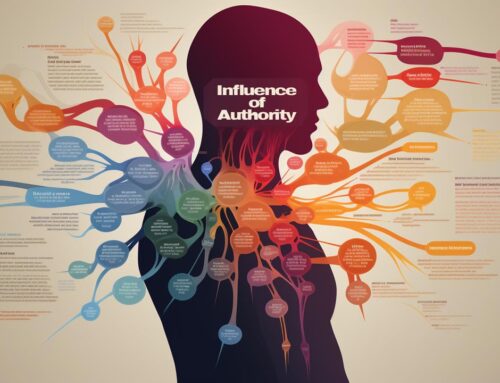If you’d like to start this series from the beginning, start with The Power of Persuasion Part 1
The Power of Persuasion Part 8. Protection and Resilience
Protection and resilience refer to the ability of individuals, communities, and organizations to withstand and recover from adverse events, challenges, or threats. In the face of various risks, such as natural disasters, economic downturns, or health crises, building resilience and implementing protective measures is crucial. This section explores the strategies and practices that enhance protection and resilience, ensuring individuals and communities can adapt and thrive in the face of adversity.
Table of Contents
- Introduction to Protection and Resilience
- Understanding Risk and Vulnerability
- Building Resilience in Individuals
- Community Resilience and Social Support
- Resilient Organizations and Businesses
- Infrastructure and Technological Resilience
- Resilience in Health and Public Health Systems
- Economic Resilience and Financial Planning
- Environmental Protection and Sustainability
- Educational and Knowledge Resilience
- Government Policies and Governance for Resilience
- Global Cooperation for Protection and Resilience
- Case Studies and Success Stories
- Frequently Asked Questions
- Final Thoughts
Introduction to Protection and Resilience
In a world characterized by rapid changes and unpredictable challenges, the concepts of protection and resilience are increasingly vital. These ideas are not just relevant in the face of natural disasters or crises but are integral to navigating everyday life’s complexities and uncertainties.
- Protection as a Foundation: Protection involves strategies, measures, and actions taken to guard against potential threats and mitigate their impact. It encompasses everything from physical safety measures to psychological defenses, and spans individual, community, and organizational levels.
- Resilience as a Response: Resilience refers to the ability to recover from setbacks, adapt to change, and keep going in the face of adversity. It’s about bouncing back stronger than before and is crucial for long-term sustainability and growth.
- Interplay Between Protection and Resilience: While protection focuses on preventing or lessening the impact of negative events, resilience is about coping and thriving despite them. Effective protection can enhance resilience by reducing the severity of challenges faced, and a resilient mindset can make protection efforts more effective.
- The Broader Context: In today’s interconnected world, the scope of protection and resilience extends beyond physical safety. It encompasses economic stability, mental well-being, social cohesion, and environmental sustainability.
Understanding Risk and Vulnerability
- Assessing Potential Threats
- Risk assessment is critical in identifying potential threats, which can range from natural disasters to cyber attacks. This involves analyzing the likelihood and potential impact of different hazards.
- Effective risk assessment requires a comprehensive approach, considering both external factors (like climate change or economic instability) and internal factors (such as infrastructure weaknesses or lack of preparedness).
- Identifying Vulnerable Populations
- Certain groups within society, such as children, the elderly, and economically disadvantaged communities, are often more vulnerable to risks due to factors like limited resources, lower capacity for resilience, and higher dependence on external support.
- Identifying these groups is essential for targeted protection strategies and to ensure that resilience-building efforts are inclusive and equitable.
- The Impact of Climate Change
- Climate change has introduced new risks and exacerbated existing ones, particularly in terms of extreme weather events, environmental degradation, and its cascading effects on societies.
- Understanding the specific implications of climate change is vital for developing adaptive strategies to protect communities and build resilience against its long-term impacts.
This understanding of risk and vulnerability forms the basis for developing comprehensive strategies that not only protect against immediate threats but also build the capacity to adapt and thrive in the face of adversity.
Building Resilience in Individuals
- Coping Mechanisms and Psychological Resilience
- Developing coping mechanisms is essential for psychological resilience. This includes strategies like problem-solving, stress management, and adaptability to change.
- Psychological resilience also involves emotional regulation, the ability to recover from emotional distress and maintain mental well-being in challenging situations.
- Developing Emotional Intelligence
- Emotional intelligence, encompassing self-awareness, empathy, and social skills, is critical for individual resilience. It helps in understanding and managing one’s emotions and in effectively navigating interpersonal dynamics.
- Programs and practices like mindfulness, counseling, and emotional literacy education can enhance emotional intelligence.
- Promoting Physical Health and Well-being
- Physical health is deeply intertwined with mental resilience. Regular exercise, a balanced diet, and adequate rest can bolster physical health, contributing to overall resilience.
- Wellness programs that focus on holistic health, including physical, mental, and social aspects, can be instrumental in building individual resilience.
Community Resilience and Social Support
- The Role of Social Networks
- Strong social networks are a cornerstone of community resilience. They provide emotional support, practical assistance, and information sharing during crises.
- Building and maintaining these networks through community events, social groups, and local organizations enhances collective resilience.
- Community-Based Disaster Preparedness
- Communities can enhance their resilience by preparing for potential disasters. This includes community training programs, establishing local response teams, and developing disaster response plans.
- Engaging community members in preparedness efforts ensures that strategies are inclusive and tailored to the community’s specific needs.
- Supportive Institutions and Services
- Local institutions and services, such as schools, healthcare facilities, and social services, play a vital role in community resilience.
- Strengthening these institutions and ensuring they are accessible and responsive to the community’s needs helps in building a supportive and resilient community infrastructure.
Resilient Organizations and Businesses
- Risk Management and Business Continuity
- Businesses and organizations need to identify potential risks and develop strategies to manage them effectively. This includes business continuity planning and disaster recovery strategies.
- Regular risk assessments and updates to these plans are crucial in responding to evolving threats and ensuring organizational resilience.
- Adaptive Leadership and Decision-making
- Adaptive leadership is key in guiding organizations through change and uncertainty. This involves flexibility, open communication, and a willingness to make timely decisions based on changing circumstances.
- Encouraging a culture of innovation and continuous learning can help organizations adapt and thrive in the face of challenges.
- Innovation and Flexibility
- Organizations that embrace innovation and flexibility are better positioned to respond to unexpected situations. This includes adopting new technologies, exploring alternative business models, and being open to change.
- Flexibility in work arrangements, operational processes, and strategic planning can contribute significantly to organizational resilience.
Infrastructure and Technological Resilience
- Resilient Urban Planning
- Urban planning plays a crucial role in building resilient communities. This includes designing cities and towns that can withstand natural disasters, climate change effects, and other crises.
- Strategies might involve creating green spaces, flood defenses, and resilient transportation systems that can function effectively under stress.
- Disaster-Resistant Infrastructure
- Developing infrastructure that can resist disasters is essential. This includes constructing buildings and bridges that can withstand earthquakes, floods, and other natural disasters.
- Regular maintenance and upgrades of existing infrastructure are also vital to ensure ongoing resilience.
- Cybersecurity and Data Protection
- In the digital age, technological resilience is critical. This includes robust cybersecurity measures to protect against cyber attacks and data breaches.
- Implementing data protection policies and regular IT systems audits can help safeguard sensitive information and ensure continuity in the face of technological threats.
Resilience in Health and Public Health Systems
- Pandemic Preparedness and Response
- Effective pandemic preparedness and response are crucial components of public health resilience. This includes having plans for rapid disease surveillance, testing, and contact tracing.
- Stockpiling essential medical supplies and ensuring healthcare systems have surge capacity are also key for pandemic resilience.
- Healthcare Infrastructure and Emergency Services
- Building resilient healthcare infrastructure means ensuring hospitals and health services can continue operating during emergencies. This might involve backup power systems, emergency medical stockpiles, and disaster-trained healthcare personnel.
- Enhancing emergency medical services, including ambulance and first responder capabilities, is also critical for rapid response.
- Mental Health Support and Trauma Recovery
- Mental health is a crucial aspect of overall health resilience. Providing accessible mental health services and support for trauma recovery is essential, particularly after crises.
- Training community members in basic mental health support and creating peer support networks can also contribute to resilience in this area.
Economic Resilience and Financial Planning
- Diversification and Economic Stability
- Diversifying economic activities and sources of income can enhance a region’s or country’s economic resilience. This reduces dependence on a single industry or sector and buffers against economic downturns.
- Encouraging innovation and supporting a range of industries, including emerging sectors, contributes to a more stable and resilient economy.
- Financial Literacy and Planning
- Financial literacy is key for individuals and communities to build economic resilience. Understanding personal finance, including budgeting, saving, and investing, helps people better manage economic shocks.
- Community financial education programs can play a significant role in enhancing this aspect of resilience.
- Social Safety Nets and Economic Support
- Robust social safety nets, including unemployment benefits, health insurance, and emergency financial aid, are crucial for economic resilience. They provide a buffer for individuals and families during economic hardships.
- Governmental economic support measures, such as stimulus packages and subsidies during crises, can help stabilize the economy and protect vulnerable populations.
Environmental Protection and Sustainability
- Conservation and Biodiversity
- Protecting natural habitats and preserving biodiversity are essential for environmental resilience. Conservation efforts include creating and maintaining protected areas, restoring degraded ecosystems, and implementing sustainable land use practices.
- Biodiversity contributes to the resilience of ecosystems, providing essential services such as pollination, water purification, and climate regulation.
- Sustainable Resource Management
- Sustainable management of natural resources ensures their availability for future generations. This involves practices like sustainable forestry, responsible water management, and eco-friendly agriculture.
- Encouraging circular economies, where resources are reused and recycled, reduces waste and conserves resources.
- Renewable Energy and Climate Mitigation
- Transitioning to renewable energy sources such as solar, wind, and hydroelectric power is critical for reducing carbon emissions and mitigating climate change.
- Climate mitigation also involves strategies like carbon sequestration, reforestation, and developing green technologies to reduce global warming impacts.
Educational and Knowledge Resilience
- Investing in Education and Lifelong Learning
- Ensuring access to quality education and promoting lifelong learning are key to building knowledge resilience. This includes adapting education systems to be more inclusive, flexible, and relevant to changing job markets.
- Lifelong learning opportunities, including online courses and vocational training, can help individuals adapt to new technologies and changing economic landscapes.
- Digital Literacy and Access to Information
- Digital literacy is increasingly important in the modern world. Ensuring that individuals have the skills to access, analyze, and use information from digital sources is crucial for knowledge resilience.
- Bridging the digital divide by providing access to technology and the internet, particularly in underserved communities, is essential for equitable information access.
- Preserving Cultural Heritage and Indigenous Knowledge
- Cultural heritage and indigenous knowledge systems are valuable sources of resilience. Preserving languages, traditions, and local knowledge can contribute to sustainable development and environmental protection.
- Initiatives to document and integrate this knowledge into broader education and policy frameworks can help maintain cultural diversity and resilience.
Government Policies and Governance for Resilience
- Disaster Risk Reduction and Management
- Effective government policies on disaster risk reduction and management are crucial for minimizing the impact of natural and man-made disasters. This includes early warning systems, emergency response plans, and community training programs.
- Investing in infrastructure that can withstand disasters and implementing land use policies that reduce vulnerability are also important.
- Climate Change Adaptation and Mitigation
- Government policies need to address both adaptation to and mitigation of climate change. Adaptation policies might include developing resilient agricultural practices, protecting coastal communities, and improving water resource management.
- Mitigation efforts involve reducing greenhouse gas emissions, supporting renewable energy, and implementing sustainable transportation systems.
- Inclusive and Participatory Governance
- Inclusive governance ensures that all segments of society, including marginalized and vulnerable groups, have a voice in decision-making processes. This contributes to more equitable and effective resilience-building measures.
- Encouraging public participation in resilience planning and policy-making can lead to more robust and community-supported solutions.
Global Cooperation for Protection and Resilience
- International Agreements and Treaties
- Global challenges like climate change, pandemics, and environmental degradation require international cooperation. Key agreements, such as the Paris Agreement on climate change and the United Nations Sustainable Development Goals, are pivotal in fostering global collaborative efforts.
- These treaties and agreements provide frameworks for nations to work together, share resources and knowledge, and commit to common goals.
- Collaboration and Humanitarian Aid
- International collaboration is crucial in humanitarian aid and disaster response. Organizations like the United Nations and various NGOs play significant roles in coordinating aid, providing relief, and rebuilding efforts in the aftermath of crises.
- Collaborative research and development, particularly in areas like health and technology, contribute to global resilience by addressing shared problems and pooling resources and expertise.
- Addressing Global Challenges Together
- Collective action is required to tackle global challenges. This includes not only environmental issues but also economic, health, and security-related challenges that transcend national borders.
- Global forums and organizations provide platforms for countries to discuss, negotiate, and find solutions to these complex issues, highlighting the importance of diplomacy and international relations in building a resilient global community.
Case Studies and Success Stories
- Japan’s Earthquake Preparedness and Response
- Japan’s advanced earthquake preparedness and response strategies, including building codes, early warning systems, and public education, have significantly reduced the impacts of earthquakes. These measures showcase how proactive planning and investment in resilience can save lives and reduce economic losses.
- New Orleans’ Recovery and Rebuilding Post-Hurricane Katrina
- The rebuilding of New Orleans post-Hurricane Katrina is a testament to community resilience. Efforts to rebuild more sustainably, engage community members, and strengthen flood defenses provide valuable lessons in urban resilience and community involvement.
- Bhutan’s Commitment to Environmental Conservation
- Bhutan’s commitment to maintaining a carbon-neutral status and its focus on Gross National Happiness over Gross Domestic Product exemplify how environmental and societal well-being can be central to national policy, serving as a model for sustainable development.
Top 10 Frequently Asked Questions
Final Thoughts
As we conclude our exploration of protection and resilience, it’s clear that these concepts are integral to our collective ability to face and overcome the myriad challenges of our time. The journey through various facets of resilience has highlighted the interconnectedness of individual, community, organizational, and global efforts.
The road to building a resilient world is complex and multifaceted, requiring collaboration, innovation, and a commitment to sustainability and inclusivity. It calls for a holistic approach, where environmental protection, economic stability, social cohesion, and individual well-being are seen as interdependent components of a resilient society.
Looking ahead, the lessons learned from success stories and the ongoing challenges underscore the need for continued vigilance, adaptability, and proactive planning. Whether in the face of natural disasters, technological changes, or global health crises, our collective resilience will be tested. However, with the right strategies, policies, and cooperative efforts, we can not only withstand these challenges but emerge stronger and more unified.
In the end, protection and resilience are not just about surviving the storms of life but thriving in their aftermath, building a world that is not only sustainable and resilient but also equitable and flourishing for all.
Sources
- Cialdini, R. B. (2009). Influence: Science and practice. Pearson.
- Kahneman, D. (2011). Thinking, fast and slow. Farrar, Straus, and Giroux.
- Asch, S. E. (1955). Opinions and social pressure. Scientific American, 193(5), 31-35.
- Milgram, S. (1963). Behavioral study of obedience. Journal of Abnormal and Social Psychology, 67(4), 371-378.
- Kardes, F. R., Cronley, M. L., & Cline, T. W. (2011). Consumer behavior. Cengage Learning.











Leave A Comment